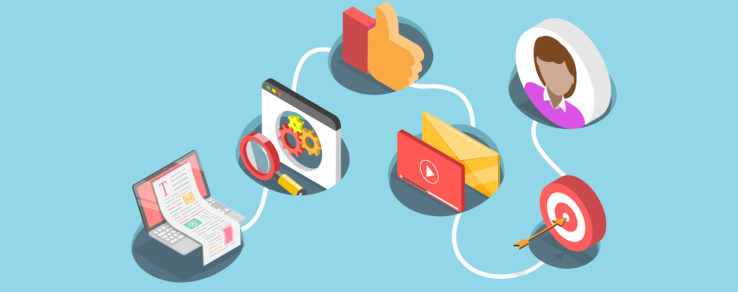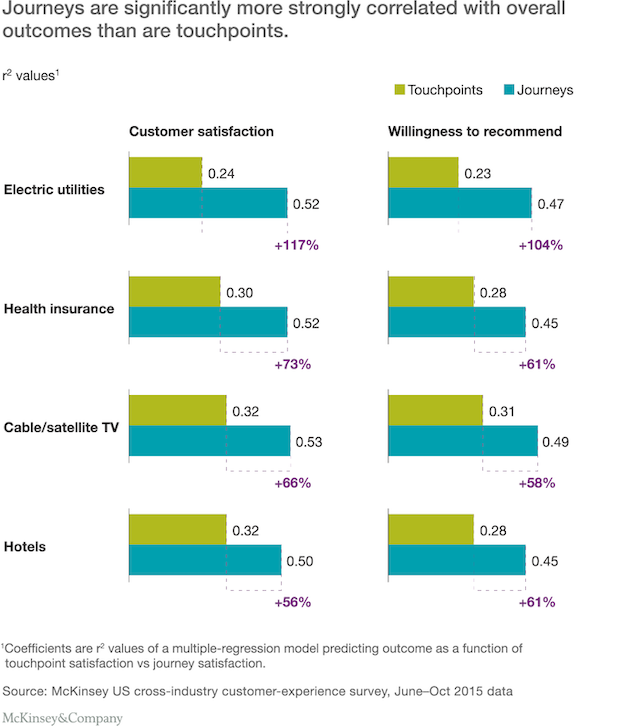Studies show that 86% of buyers will pay more for a better customer experience. But you can’t improve your utility’s customer experience if you don’t understand it from your customers’ perspective. That’s where customer journey mapping comes in.
Journey mapping is critical for understanding and solving customer pain points. This becomes even more important as customer experiences shift with changing technologies and preferences. Customer journey mapping lays the groundwork for greater engagement and sets your utility up for success and long-term customer satisfaction.
To better uncover and solve customer pain points, your energy utility can benefit from using the right customer journey mapping software. Consider the following tips and tools to assess and improve the customer experience at your energy utility.
What is Customer Journey Mapping?
Customer journey maps are visual workflows that outline the step-by-step experience a customer has with your brand, service or product. The workflow typically includes steps from both the customer’s and company’s point of view, but focuses on the cumulative experiences across multiple touchpoints and channels over time.
Customer journey map examples provide clearly defined start and stop points for the experience you want to highlight, inclusive of customers’ actions, emotions and behaviors.
Companies that do not incorporate experience mapping risk facing an array of negative consequences. According to McKinsey, failing to appreciate customer journey mapping can include consequences like:
- Customer defection
- Dramatically higher call volumes
- Lost sales
- Lower employee morale
In contrast, there are many benefits to customer journey mapping, including:
- Strategize and plan for utility resources
- Identify and solve for customer pain points
- Improve overall customer satisfaction
- Enhance sales and retention
- Reduce end-to-end service cost
- Identify operational inefficiencies within the utility
- Strengthen employee satisfaction
Delivering an exceptional customer journey experience makes it more likely that customers repeat a purchase, spend more, make a recommendation to their friends and stay updated with your utility.
“Almost 90% of those using customer journey mapping said their program is delivering a positive impact, the most common one being an increase in customer satisfaction,” according to Mike Weir, Chief Revenue Office at G2. “Lower churn, fewer customer complaints, and higher NPS [net promoter scores] were also among the top impacts.”
How Do You Create a Customer Journey Map?
Follow these steps when preparing to develop a journey map:
- Identify the experiences you want to analyze
- Identify the users in the experience
- Cluster your users into distinct groups
- Interview users from your groups to get direct input
- Map out the steps, including actions, mediums, emotions and behaviors
It helps to start with your goals and ask yourself, “Whose journey am I mapping?” From there, you can create a customer persona and capture the highlights of the journey in easy-to-understand stages. Remember, you want to make the customer journey map actionable.
Customer Journey Mapping Software and Tools
There are so many utility customer journey mapping tools available that it can be overwhelming to choose which one to use. We’ve compiled a list of some of the top platforms to make it easy for you to decide.
“When choosing a software, it depends on how robust you want the journey map to be, and then how visually appealing you want it,” says Zach Hardison, Questline Digital’s Vice President of Solutions Innovation. “Make sure the software meets your needs and accomplishes your journey mapping goals. And don’t overcomplicate it — sometimes simple is better if creates an easy-to-understand and actionable process. Every customer experience is different — choose a software that fits with the experience that you’re mapping out.”
When choosing customer journey map software, consider:
- Easy design functionality
- Quick and simple editing
- Sharing capabilities
- Real-time collaboration
- Integration with data
Five Tools to Create Your Customer Journey Map
1. Mural: A whiteboard tool with pre-built templates, capabilities for real-time collaboration and easy-to-use models for common cases and proven methods.
- Price: Various subscriber options ranging from free to $18 per user per month depending on your needs.
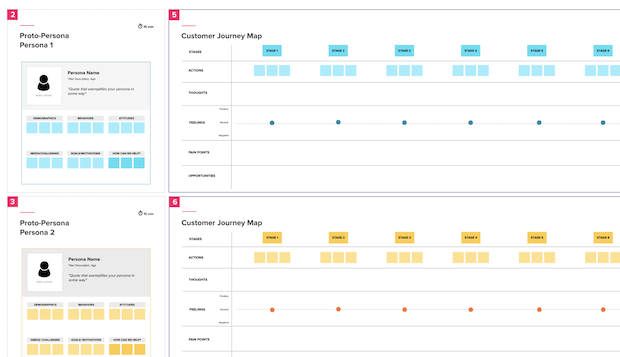
2. LucidChart: Simple cut-and-paste capabilities that allow teams to clarify complicated processes. This software is used by many Fortune 100 companies, including HP and NBC.
- Price: Plans ranging from free to $13.50 per user per month.
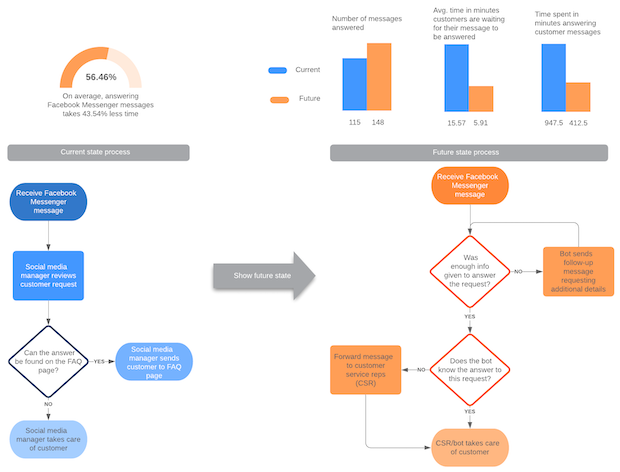
3. Microsoft Visio: Another simplified shapes tool, this flowchart and diagramming software provides premade templates, starter diagrams and stencils. It also allows for real-time collaboration and features integration with Microsoft for easy sharing.
- Price: Free trial version, with paid options ranging from $5 to $15 per user per month.
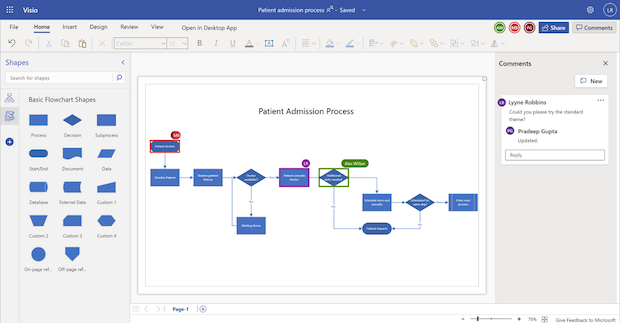
4. InDesign: Adobe is well known for its robust suite of design tools. There is a learning curve if you’ve never used Adobe products before, but the capabilities allow you to create beautiful designs.
- Price: $34 per user per month, or $80 per month for all of Adobe Creative Cloud apps.
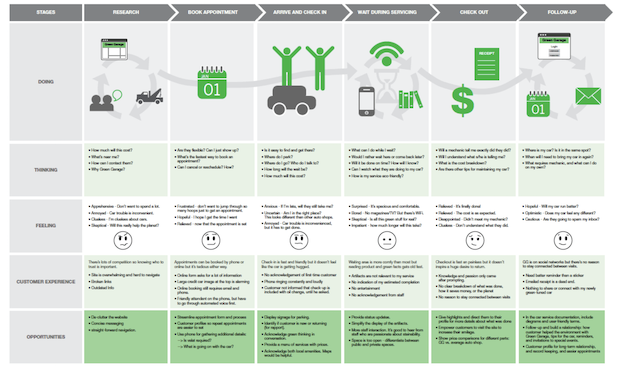
5. SuiteCX: A good mix of features and design elements for those who are seeking robust capabilities without a steep learning curve. It also provides a built-in journey mapping analytics platform to track your progress.
- Price: Based on company size, ranging from $2,000 per month to $20,000 annually.
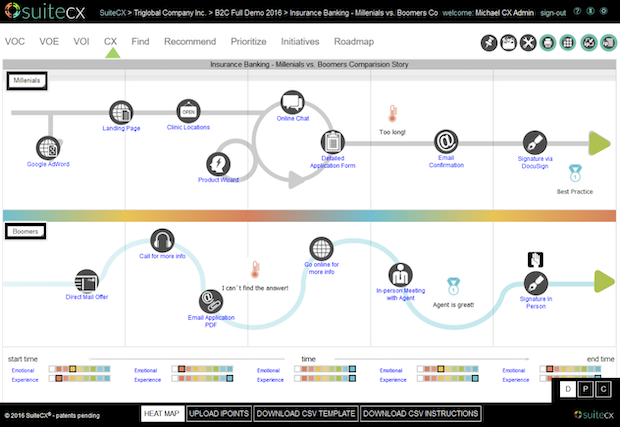
Integrate Customer Journey Mapping into Your Strategy
Customer journey mapping is a process that gives your utility the opportunity to create better, more seamless customer experiences that boost engagement and satisfaction. Take advantage of our insights into customer journey map software to build the foundation for a successful journey mapping process.
Remember: No process is perfect. It’s important to keep this in mind and take a step back before jumping into journey mapping. Your goal is to create the best experience you can, considering that as technology and customer preferences shift, the processes will continuously evolve.
As Annette Franz, CEO of CX Journey said, “Journey mapping is a creative process that allows you to understand — and then redesign — the customer experience. The output is not just a ‘pretty picture;’ once the map is developed, it is meant to be a catalyst for change.”

